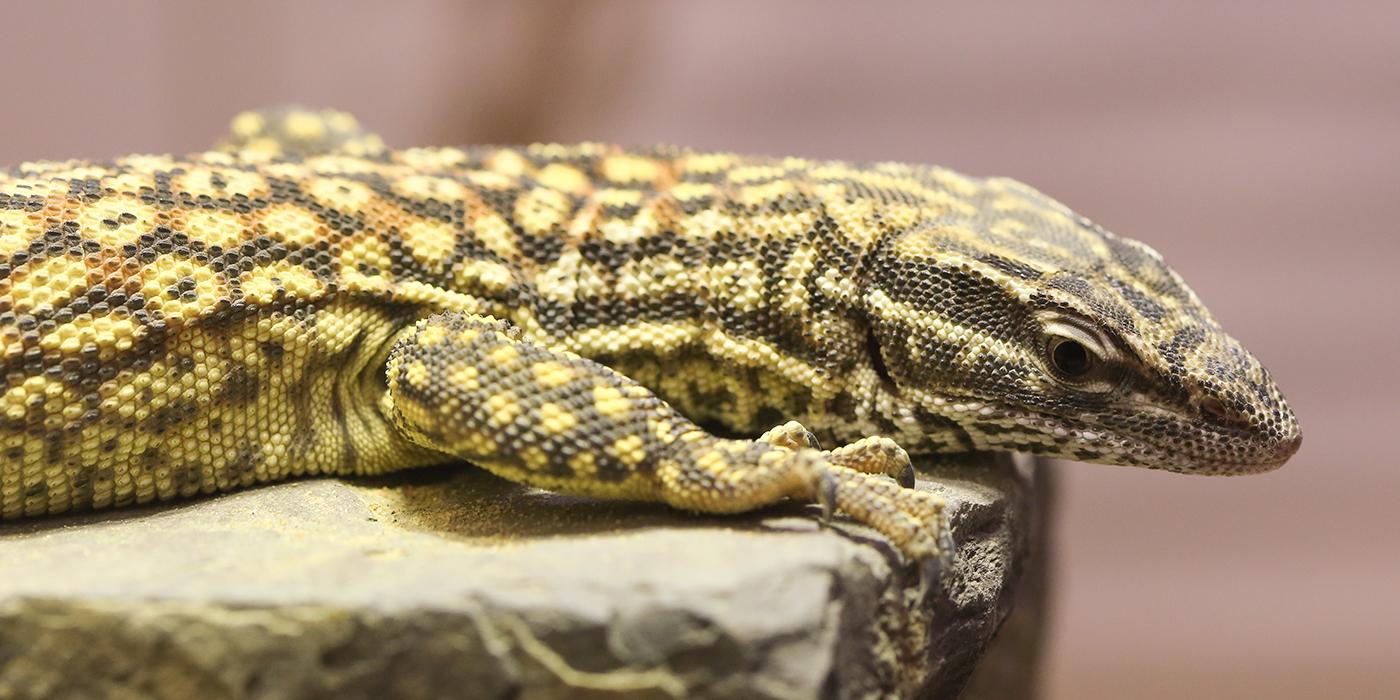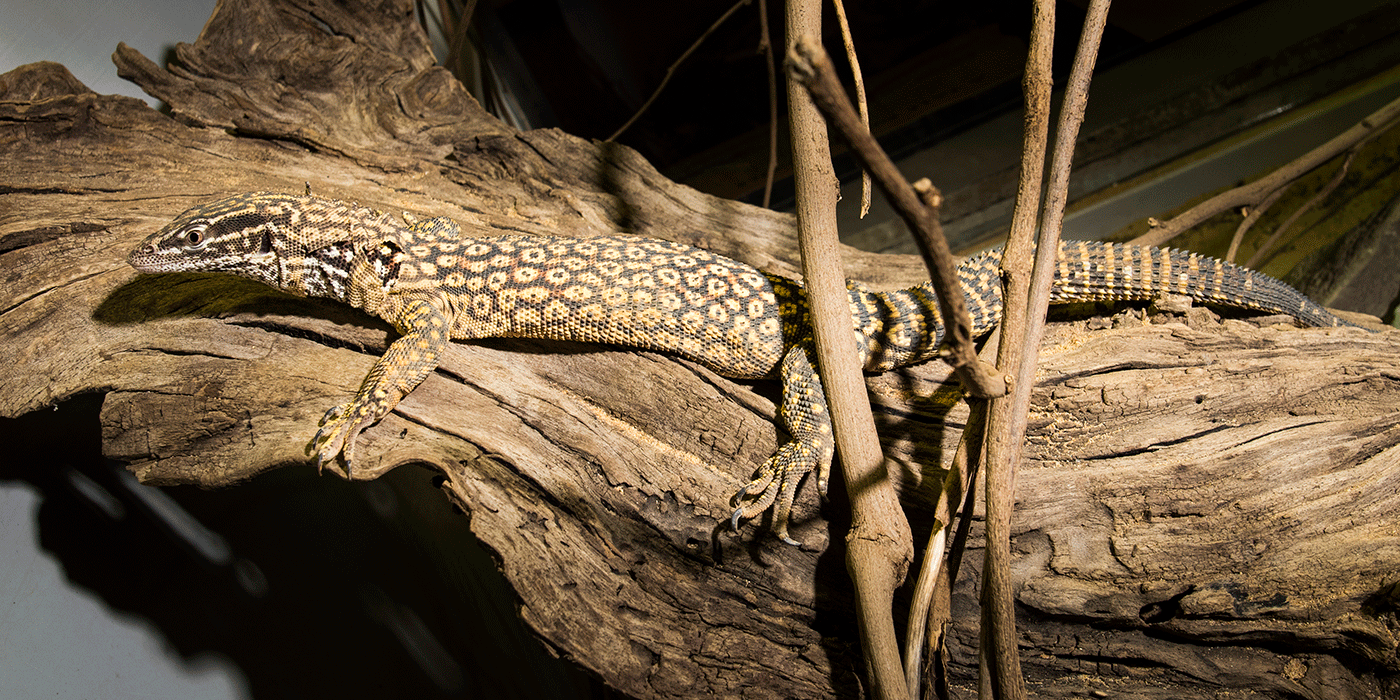Physical Description
Spiny-tailed monitors are a small- to medium-sized monitor species with a body shape that resembles a miniature Komodo dragon. They have short legs, a low, rounded body and a long, spiny, tapering tail that can be twice the length of the abdomen (or belly). Their heads are pointed and covered in small, smooth scales. Their nostrils are situated at the sides of the nose, between the eyes and the tip of the snout.
The spiny-tailed monitor's back is dark brown with a pattern of yellow circles that contain red and brownish spots. Its head is brown, with yellow or cream colored spots and a deep brown stripe that extends through the eye and continues to the neck. Its underbelly is typically cream colored. The spiny-tailed monitor also has pale stripes that run lengthwise down its neck, which distinguish it from two similar-looking subspecies of lizards that live in the same area. Its spiny tail can be wielded like a club to fend off threats and guard the entrance to its burrow.
Size
Native Habitat
Spiny-tailed monitors are well adapted to hot, arid conditions and are found across a wide area of Northern Australia. Their range overlaps with two closely related subspecies, Varanus acanthurus brachyurus and Varanus acanthurus insulanicus. They live in a variety of tropical and subtropical habitats, but they are most commonly associated with rocky ranges and outcrops. They will also live in trees, burrows and lowland areas of shrubs and spinifex grass. In stony areas, they like to shelter in rock crevices or in burrows under slabs of rock where they are protected from predators and extreme temperatures.
Lifespan
Food/Eating Habits
They eat a variety of insects, spiders, grubs, snails, small lizards and mammals. They have also been observed overpowering and eating other monitor lizards and small snakes. They get most of the water they require from their food.
At the Smithsonian's National Zoo, they eat crickets, mealworms, roaches and occasionally mice.
Sleep Habits
Reproduction and Development
Spiny-tailed monitors become sexually mature when they are about 1 year old. In the wild, mating behavior usually coincides with the onset of spring in the late dry season (August to November). After breeding, females dig or tunnel into the soil and lay a clutch of five to 15 eggs in the earthen nest chamber they have excavated.
The eggs are about 1 inch (25 millimeters) long and are incubated at around 80-90 degrees Fahrenheit by the hot, humid ambient conditions. They hatch after about 120 days. The 4-5 inch (10-12 centimeter) long hatchlings dig themselves out of the nest, and then seek cover from predators and look for invertebrates to eat.
Conservation Efforts
Help this Species
Share the story of this animal with others. Simply raising awareness about this species can contribute to its overall protection.
Smithsonian's National Zoo and Conservation Biology Institute. (n.d.). Spiny-tailed monitor. Retrieved November 30, 2025, from https://nationalzoo.si.edu/animals/spiny-tailed-monitor
Animal News

Giant Panda Qing Bao Gets a Checkup ›

7 Spooktacular Animal Facts for Halloween ›


